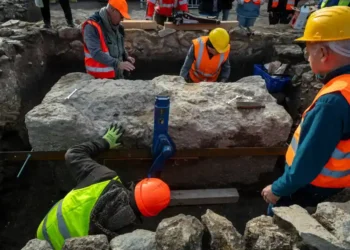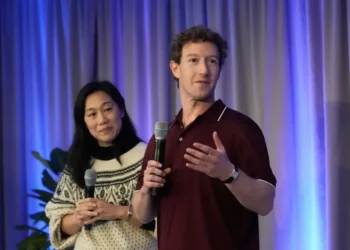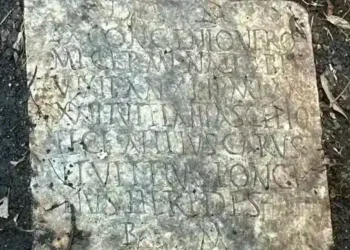The Science Behind Milky Seas: Why Do Some Oceans Glow Brightly at Night
For more than 400 years, sailors have reported a mesmerizing and mysterious oceanic glow that stretches across the sea, as far as the eye can see. Known as “milky seas,” this phenomenon has baffled scientists and been described in vivid detail by sailors who’ve witnessed it firsthand.
One sailor, J. Brunskill, who was aboard the SS Ixion in 1967, recounted that the Arabian Sea “took on a phosphorescence glow” stretching across the horizon, with the ocean glowing brighter than the moonlit sky. Another crew, aboard the MV Westmorland in 1976, described sailing through a “large area of bioluminescence,” where the sea glared a brilliant green, and the waves appeared almost flat.
Such glowing seas, often referred to as “milky seas,” have remained elusive to scientific research due to their rarity and remote locations. Now, however, researchers may be closer than ever to unlocking the secrets of this captivating phenomenon.
A new study, published in Earth and Space Science, offers valuable insights into the occurrence of milky seas, thanks to the efforts of Justin Hudson, a doctoral student from Colorado State University. By compiling over 400 recorded sightings of milky seas, Hudson hopes to provide scientists with a tool to better predict when and where these bioluminescent events might occur.
“My goal is to provide a database that can help researchers study milky seas and unravel this centuries-old mystery,” said Hudson. The database will be instrumental in helping researchers understand not only when milky seas might appear but also their potential significance for ocean ecosystems.
Observers often describe the glow of milky seas as similar to the “glow-in-the-dark” stars many children have on their bedroom ceilings. The light emitted can be so bright that it allows sailors to read in the darkness of the night ocean. These bioluminescent displays can cover vast areas, sometimes as large as 100,000 square kilometers, and the biggest ones are even visible from space.
Though the exact cause of this glow remains unclear, scientists believe it might be linked to high concentrations of bioluminescent bacteria, specifically a species called Vibrio harveyi. This theory stems from a 1985 encounter where a research vessel collected a water sample during a milky sea event and identified the presence of these glowing bacteria.
However, as Dr. Steven Miller, a co-author of the study, points out, the full mechanism behind how milky seas cause entire oceans to glow remains a mystery. While scientists know that the bacteria are involved, understanding how and why they emit light on such a large scale is still an unsolved puzzle.
The potential ecological implications of milky seas are also intriguing. Unlike the more commonly observed bioluminescence caused by plankton, which glows when disturbed, milky seas glow steadily. One theory is that the glowing bacteria may attract fish, which ingest the bacteria, allowing them to thrive in the fish’s digestive system.
Dr. Edith Widder, an oceanographer not involved in the study, emphasized the importance of understanding how such a bioluminescent event affects marine life. “Light plays a huge role in the behaviors of marine animals, especially those that rely on darkness to hide from predators,” she explained. Understanding the dynamics of milky seas could provide insight into how these glowing events disrupt the delicate balance of life in the deep ocean.
One of the most exciting developments from the new research is the possibility of predicting when and where milky seas will occur. Hudson’s database reveals that these bioluminescent events are most common in the Arabian Sea and Southeast Asian waters. These areas, which experience upwelling — the process by which nutrient-rich waters from the deep ocean rise to the surface — are primed for significant biological activity. While milky seas occur only once or twice a year in these regions, Hudson’s research could help pinpoint the specific conditions needed for the phenomenon to unfold.
This data also points to a potential connection between global climate events, such as the Indian Ocean Dipole and the El Niño Southern Oscillation, and the frequency of milky seas. As climate change continues to alter oceanic conditions, scientists are eager to understand how these changes might affect the occurrence of such phenomena.
The study of milky seas has long been hindered by the lack of reliable data, but Hudson’s database has changed that. For the first time, scientists have a comprehensive record of where and when milky seas have occurred. This could be a game-changer for researchers, allowing them to plan future expeditions to observe the phenomenon firsthand.
Dr. Miller hopes that continued research into milky seas will shed light on the role bioluminescence plays in the global ecosystem. “Understanding how these bacteria and plankton function at the bottom of the ocean’s food chain is crucial, as it could reveal the impact of climate change on marine life,” he said.
With the creation of this new database and the ongoing study of milky seas, researchers are closer than ever to solving one of the ocean’s oldest mysteries — and uncovering what these glowing seas can teach us about the health of our planet’s oceans.
This article was rewritten by JournosNews.com based on verified reporting from trusted sources. The content has been independently reviewed, fact-checked, and edited for accuracy, neutrality, tone, and global readability in accordance with Google News and AdSense standards.
All opinions, quotes, or statements from contributors, experts, or sourced organizations do not necessarily reflect the views of JournosNews.com. JournosNews.com maintains full editorial independence from any external funders, sponsors, or organizations.
Stay informed with JournosNews.com — your trusted source for verified global reporting and in-depth analysis. Follow us on Google News, BlueSky, and X for real-time updates.














